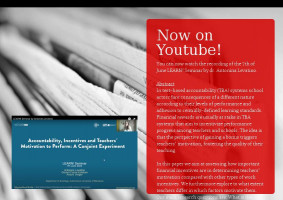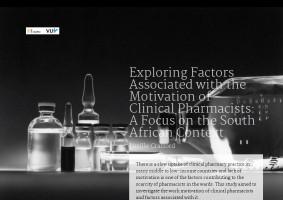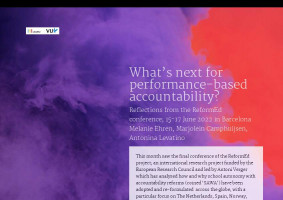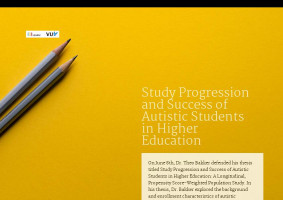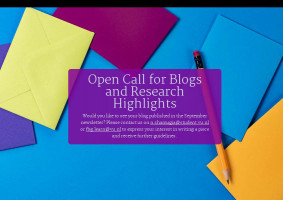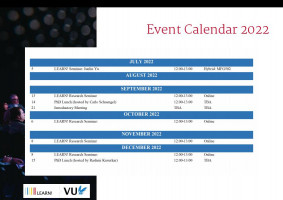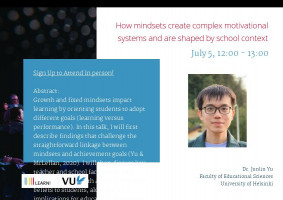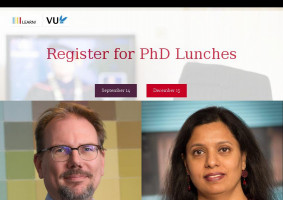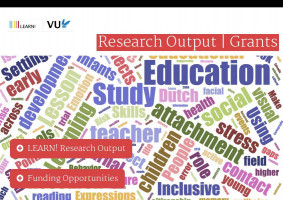On June 8th, Dr. Theo Bakker defended his thesis titled Study Progression and Success of Autistic Students in Higher Education: A Longitudinal, Propensity Score-Weighted Population Study. In his thesis, Dr. Bakker explored the background and enrollment characteristics of autistic students, as well as barriers in their study progression, and ways institutions should address these issues. Dr. Bakker is currently a managing director of the Hague university of applied sciences and will take a role as a lector in learning analytics at the same university from January of 2023.
_w340_h420_1.jpg)
Can you describe your academic background and what led you to taking your Ph.D. position?
I studied theology but later transitioned to business information studies, specializing in student administration systems. I became a team leader of the VU analytics team, analyzing study data to find patterns in student retention and study success. I applied these insights – first in my job at Deloitte Consulting – to see how I could predict the dropout of students in universities. During one of my talks presenting this work, I met Sander Begeer, and after a few meetings on the possibilities of the dataset we developed in my team, he offered me to do a PhD with him.
In my PhD I studied a complete, institutional dataset of 101 bachelor students of the VU between 2010 and 2016 with an ASD diagnosis that I could compare to 2,252 students with other disabilities and 24,794 students without disabilities, unprecedented in the literature. I was especially interested in looking at this group of students because I wanted to understand their unique challenges. Before my studies, there had only been 23 articles published in the literature worldwide, with in total 378 students.
You start your thesis by describing the enrollment characteristics of students with autism?
We wrote the first article to understand the differences in enrollment and the background characteristics of autistic students compared to their peers. We found that autistic students mainly were male, one year older than other students, more enrolled in STEM studies and more often followed a non-regular education path before entering the university.
The higher age and the irregular study path could be explained by the difficulties students with autism face in reaching the higher education level. For example, some autistic students drop out of high school and later take additional examinations - which can only be taken at 21 years of age - to enter the university. Thus, explaining the higher average age in this group of students. On the other hand, we also see autistic students who graduate from havo and finish the first year at a university of applied sciences to transfer to research universities.
An interesting thing to note was that students with autism prepared themselves better than their peers. This shows they are highly focused on their studies. They expected to spend all their time on their studies and spend less time in student associations or extracurricular activities.
Autistic students can request academic accommodations, such as additional study time or quiet examination rooms. They will likely benefit from study accommodations earlier in their studies due to an early diagnosis.
Interestingly, autistic students did not differ from their peers in high school grades. They are just as clever as other students.
How does their education progress during the first year of their studies?
After balancing results using propensity score weighting, I found that the study pace is the same for autistic students as for other students. The only exception is that students with autism tend to fall slightly behind others around Christmas during their first year of studies. We think this dip in performance is because autistic students have difficulties adjusting their study techniques. Whereas other students learn from their mistakes and adapt to them more efficiently, we assume students with autism tend to stick to their methods but study harder. So the difference, in the end, is likely due to the other students increasing their performance through adaptation. Another possible explanation could be that Christmas is a busy period, leading to sensory overload in autistic students and preventing them from making progress.
Other variables where one would expect autistic students to differ - such as dropout - were not different between the student groups after balancing.
Do students with autism differ in the study progress in the second and third years of their studies?
We found no differences in dropout after two or three years and degree completion. However, autistic students have more no-shows (absences from the exams) in the second year. To predict study success in the general student population, we usually look at the number of credits obtained in the first, second, and third years. However, autistic students’ number of no-shows in the second year is more predictive of success.
Thus, in general, students with autism demonstrate more withdrawal from their studies. The most exciting result of the third paper of my thesis was the failure to find significant differences between autistic students and their peers. The differences were small or absent entirely.
In the fourth paper of my thesis, I built several prediction models using machine learning to predict student success. I was interested in prediction accuracy and in factors that would be most important in these prediction models. I found it was easier to predict success for autistic students than for other students. This increase (called a ‘lift’) in prediction accuracy over the no information model was about 21% for decree completion after three years.
Additionally, the predictors of success in autistic students differed from those in the general student population. For the first year, the most important predictors were parallel programs and the date of application.
The chances of dropout were higher in students that followed parallel study programs, likely leading to overload. Additionally, the later the students with autism applied for their studies, the more likely they were to drop out.
In the second year, the most important predictor was age, with older students dropping out more often than younger students. Higher age indicates long-term academic challenges probably stemming from issues in earlier secondary education. Again, age was the most important predictor of success in the third year, together with the average math grade in high school; a higher grade in math is a proxy for IQ and academic fit, with higher chances of graduating in three years.
What are the implications of your findings in terms of how higher education should be organized to benefit autistic students?
The consequences of my findings are helpful for student counselling. The most important thing is to ease the transition into university life by providing students with accurate information about what it is like to study at a university. The current focus of the university websites is to provide factual information to autistic students about academic provisions and coaching. However, information describing what it is like to have autism and study at the university is lacking - what are the experiences of other students, whether they study a lot, whether it is a good idea to disclose their autism, etc. The information for autistic students should focus more on the worries students with autism might have.
Another important aspect is the timeliness of informing students about their academic accommodations. Once students have requested help or disclosed their diagnosis on Studielink, it is essential to tell them whether they can get an academic accommodation as soon as possible. This can reduce additional stress experienced by autistic students.
In the first year of studies, we should pay attention to student motivations - to understand why some students with be late with their applications - and monitor students with parallel study programs. In the second year, it is essential to devote more attention to older students' executive and social skills. Finally, in the third year, it is necessary to promote best practices for completing the graduation assignment in time. This is what I call a stepped and stacked approach - beginning with broader scopes of assistance in transitioning to higher education and becoming more and more focused on specific aspects determining study success.
I believe my thesis demonstrates that the help that autistic students have benefitted from thus far has made it possible to arrive where we are now. Without these accommodations, we may have had a more pessimistic picture of their academic success. However, several improvements are possible.
Our next step will be to examine academic success in later years of education. Additionally, we would like to research students with other disabilities together with fellow researchers.



